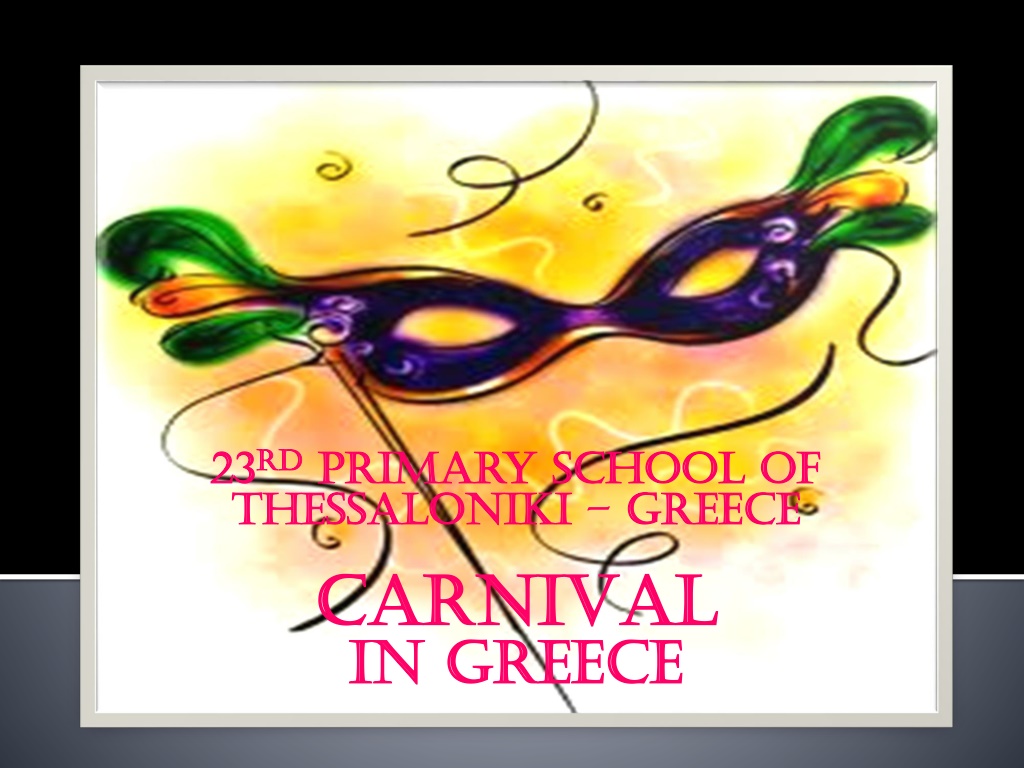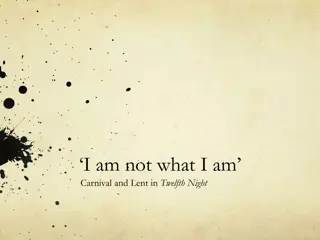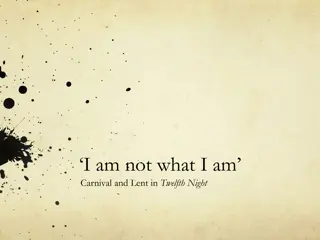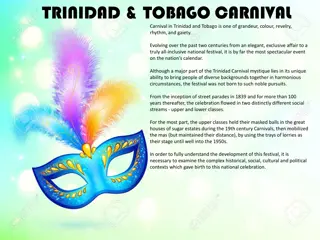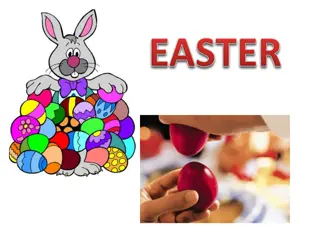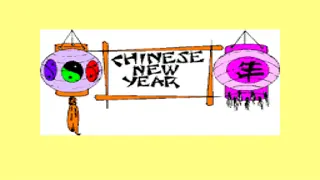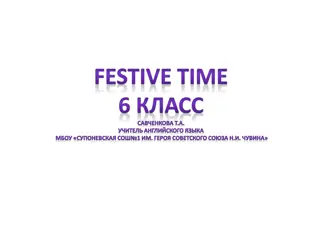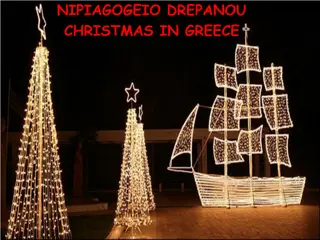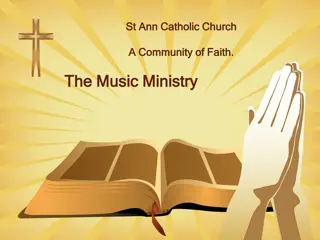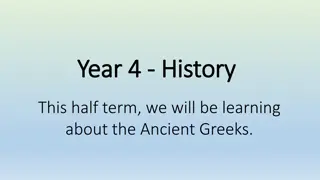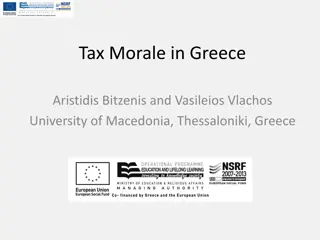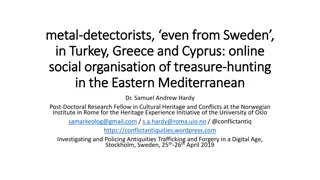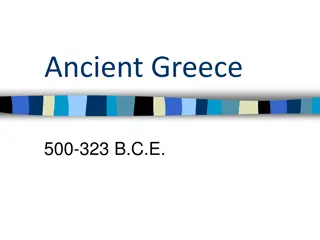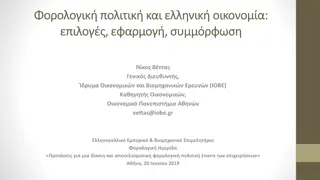Festive Celebrations of Carnival in Greece
Carnival, known as Apokries in Greek, is a joyful feast celebrated across Greece with masquerades and parties. It signifies the period of festivity before Lent, incorporating ancient Greek traditions of masks and disguises. Festivities take place all over the country, culminating in lively parades and events in cities like Thessaloniki, Patra, and Xanthi. The carnival season is a time of revelry, creativity, and communal celebration, bringing together people of all ages to enjoy the vibrant spirit of Greek culture.
Download Presentation

Please find below an Image/Link to download the presentation.
The content on the website is provided AS IS for your information and personal use only. It may not be sold, licensed, or shared on other websites without obtaining consent from the author. Download presentation by click this link. If you encounter any issues during the download, it is possible that the publisher has removed the file from their server.
E N D
Presentation Transcript
23 23rd thessaloniki thessaloniki greece CARNIVAL CARNIVAL IN GREECE IN GREECE rdprimary school of primary school of greece
Carnival or Apokries in Greek, is a feast of fun celebrated all over the country with masquerade and parties. The name APOKRIES means abstention from meat , because after that starts the period of Lent that goes on till Easter. The characteristic of Carnival is disguising and wearing masks. The masks remind the clay masks worn by actors in ancient Greek theatre. The costumes and disguises offered-and still do- anonymity and freedom of expression. Apokries is celebrated all over Greece, with feasts and songs that can t always be described as decent!
In ancient Greece, the festival in honour of Dionysus took place in early Spring, as Dionysus symbolised life s rebirth after Winter. Today, carnival is held in the same period but not on a fixed date, as it depends on the moveable feast of Easter.It is celebrated 40 days before Easter, so this ceremony has been incorporated into the Christian religion.
Today, there are many different carnival parades and festivities going on all over Greece. Hundreds of groups take part in those parades, and anyone who wishes to participate can just join a group. Celebrations stop on Clean Monday, when kitchen utensils are cleaned of animal products, because the Lent period starts.
The biggest festival take place in the city of Patra for the past 180 years, and the regular attendance of young people in the great parade is approximately 40,000. That s why this festival is considered to be one of the greatest in Europe and is a meeting point for all carnival enthusiasts around Greece. Just like in Rio de Janeiro, people in Patra spend the whole year preparing for the coming Carnival celebrations. There is a big float parade and thousands of masqueraders fill the main streets of the town. The floats have themes taken from current political and social circumstances.
XanthisCarnival is the biggest festival of Northern Greece, and has been taking place yearly since 1926. Approximately 20,000 visitors go there every year to get a taste of fun, imagination, creativity and music.
In Naoussa, every year people celebrate the custom of Yenitsari and Bules . Yenitsari are men dressed in traditional Greek costumes and Bules are also men dressed-up as women. They all wear masks and sing and dance in the city s roads.
The carnival in Galaxidi is famous for the custom of flour war , a strange but funny carnival custom. On Clean Monday they throw flour and ashes at each other, so they turn white and in a minute they re all covered in black!
There is the custom of yeri (men dressed as old men), korela (a man dressed as a young lady) and koudounati (bell carriers). They go around the streets, say funny stories, dance and drink.
Gaitanakiis a traditional Carnival dance. One of the dancers holds a pole from which 12 ribbons start . The dancers hold the colorful ribbons and dance around the pole. The dance symbolizes the circle of life.
Families usually have a picnic with meat- free foods and sweets and they fly colourful kites. They usually compete to each other on whose kite is going to fly higher.
